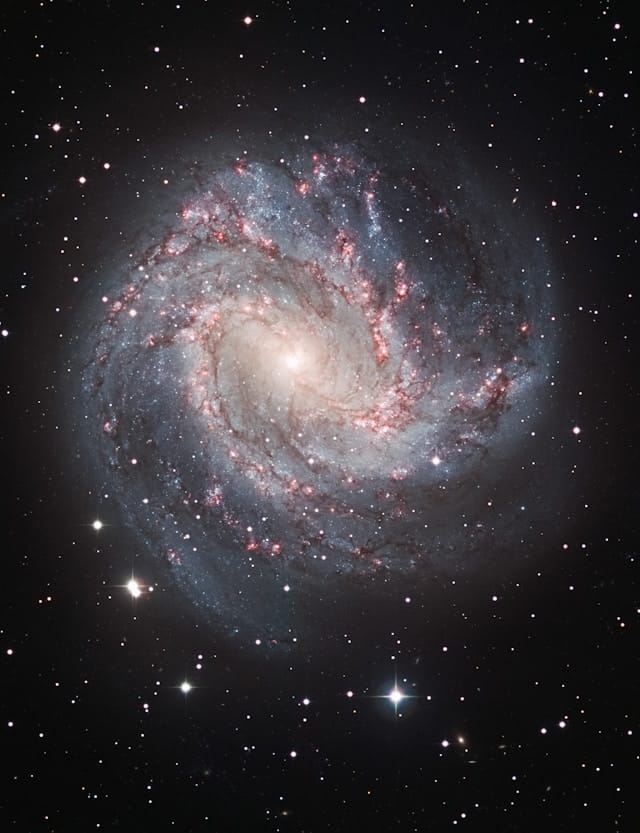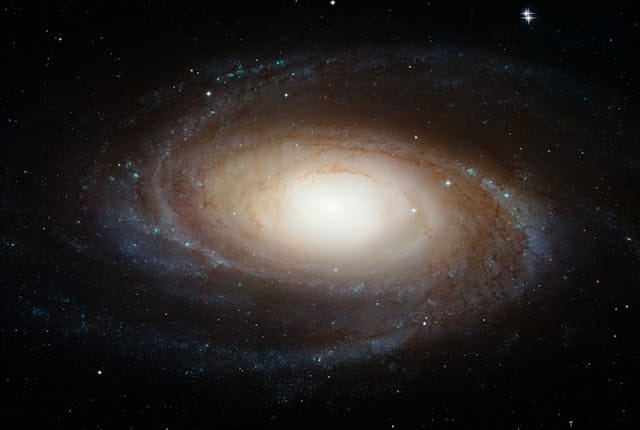When we hear the term black hole or active galactic nuclei, it often conjures up images of a cosmic void, a mysterious entity that swallows everything in its path. This enigmatic phenomenon has fascinated scientists and space enthusiasts alike for decades, and it continues to be one of the most intriguing aspects of astrophysics. But what exactly is a black hole? How does it form, and what happens when something gets too close to one? In this blog post, we’ll explore seven fascinating facts about active galactic nuclei, shedding light on their mysteries and their significance in the universe.
Introduction to Black Holes
A black hole is a region in space where gravity is so strong that not even light can escape its pull. This happens because a huge amount of mass gets packed into a very small space, creating a gravitational field so intense that nothing, not even electromagnetic radiation, can escape from it. The point of no return, where the gravitational pull becomes too strong to overcome, is called the event horizon. Once an object crosses the event horizon, it is believed to be lost forever, drawn into the singularity at the center of the black hole where the laws of physics as we know them break down.
The concept of black holes has been around for centuries, but it wasn’t until the 20th century that scientists began to understand their nature. Albert Einstein’s theory of general relativity, published in 1915, laid the foundation for the modern understanding of active galactic nuclei. In the decades that followed, theoretical physicists such as Stephen Hawking contributed significantly to our understanding of how active galactic nuclei form and behave.
In this post, we will delve deep into the mysteries of black holes, uncovering their formation, types, behavior, and the cutting-edge research surrounding them. Whether you’re new to the topic or already have some knowledge, these seven key insights will give you a comprehensive understanding of these cosmic wonders.
How Do Black Holes Form?
The first question many people ask when they hear about active galactic nuclei is, “How do they form?” The answer lies in the life cycle of stars. Most black holes form from the remnants of massive stars that have exhausted their nuclear fuel. When a star runs out of fuel, it can no longer support itself against the force of gravity, and the outer layers collapse inward. If the star is large enough, this collapse leads to the formation of a active galactic nuclei.
There are three main ways in which black holes form:
1. Stellar Collapse
The most common way a active galactic nuclei forms is through the collapse of a massive star. When a star with a mass greater than about 20 times that of the Sun runs out of nuclear fuel, it can no longer resist gravitational collapse. The core collapses into a singularity, and the event horizon forms around it, creating a black hole. This type of active galactic nuclei is called a stellar-mass black hole.
2. Supernova Explosion
Sometimes, the collapse of a massive star is accompanied by a supernova explosion. During this event, the outer layers of the star are blasted into space, while the core collapses into a active galactic nuclei. These violent explosions are some of the most energetic events in the universe, briefly outshining entire galaxies.
3. Merging Neutron Stars
When two neutron stars, the remnants of smaller stars, collide, the immense gravitational forces can merge them into a black hole. This process was observed for the first time in 2017, marking a major milestone in astrophysics.
Types of Black Holes
Not all black holes are created equal. In fact, there are several different types of black holes, each with unique characteristics. Understanding these types is key to grasping the diverse nature of these cosmic objects.
1. Stellar-Mass Black Holes
Stellar-mass black holes are the most common type, formed from the remnants of massive stars. These black holes have masses ranging from a few times to several tens of times the mass of the Sun. Their gravitational pull is incredibly strong, but they are relatively small compared to other types of active galactic nuclei.
2. Supermassive Black Holes
Supermassive active galactic nuclei are found at the centers of most galaxies, including our own Milky Way. These black holes have masses ranging from millions to billions of times that of the Sun. Despite their enormous mass, they are much larger than stellar-mass black holes, with event horizons that can span hundreds of light-years.
The exact mechanism behind the formation of supermassive active galactic nuclei is still a subject of active research. Some theories suggest they may form from the merger of smaller active galactic nuclei or through the accumulation of mass over time.
3. Intermediate-Mass Black Holes
Intermediate-mass black holes are a relatively new discovery and are thought to have masses between 100 and 100,000 times that of the Sun. They are larger than stellar-mass active galactic nuclei but smaller than supermassive ones. While evidence for their existence is still growing, intermediate-mass active galactic nuclei may provide a key link in understanding how supermassive black holes form.
4. Primordial Black Holes
Primordial black holes are hypothetical objects that may have formed in the early universe, shortly after the Big Bang. Unlike other types of active galactic nuclei, they are not formed from collapsing stars but are thought to have originated from fluctuations in the density of matter in the early universe. While no direct evidence for primordial active galactic nuclei has been found, they remain a topic of interest in cosmology.
The Event Horizon: Point of No Return
One of the most famous aspects of a active galactic nuclei is its event horizon. This is the boundary beyond which nothing can escape the gravitational pull of the active galactic nuclei. Once something crosses the event horizon, whether it’s light, matter, or information, it is trapped and will inevitably fall towards the singularity at the center of the black hole.
The event horizon is not a physical surface but rather a point in space where the escape velocity exceeds the speed of light. For stellar-mass active galactic nuclei, the event horizon may only be a few kilometers wide, while for supermassive black holes, it can be thousands or even millions of kilometers across.
Gravitational Time Dilation Near the Event Horizon
An intriguing consequence of general relativity is that time behaves differently near a active galactic nuclei. Due to the extreme gravitational field near the event horizon, time slows down relative to an observer far away from the active galactic nuclei. This effect, known as gravitational time dilation, means that an observer falling into a active galactic nuclei would appear to slow down as they approach the event horizon, eventually freezing in time from the perspective of a distant observer.
What Happens Inside a Black Hole?
One of the greatest mysteries surrounding black holes is what happens inside them. Once something crosses the event horizon, it is doomed to fall toward the singularity, a point of infinite density where the laws of physics break down.
The Singularity
At the center of a active galactic nuclei lies the singularity, a point where the gravitational forces are so strong that spacetime itself becomes infinitely curved. The density of the singularity is thought to be infinite, and the known laws of physics, including general relativity, cannot describe the conditions at this point. The singularity remains one of the most puzzling aspects of active galactic nuclei, and understanding it is one of the key goals of modern theoretical physics.
Spaghettification
As an object approaches the singularity, it experiences a process known as spaghettification. Due to the extreme difference in gravitational force between the part of the object closest to the active galactic nuclei and the part farthest away, the object is stretched and torn apart into thin strands, like spaghetti. This process would be fatal for any human or object attempting to venture into a active galactic nuclei.
Hawking Radiation: Black Holes Can Evaporate
In 1974, physicist Stephen Hawking made a groundbreaking discovery: black holes are not entirely black. According to Hawking’s theory, black holes can emit a form of radiation, now known as Hawking radiation. This radiation arises from quantum effects near the event horizon and allows active galactic nuclei to lose mass over time.
Over very long timescales, Hawking radiation can cause a active galactic nuclei to shrink and eventually evaporate. This discovery was revolutionary because it suggested that active galactic nuclei are not eternal but can slowly decay over billions of years.
Black Holes and the Search for New Physics
Black holes have become a crucial testing ground for new theories in physics, particularly those that attempt to reconcile general relativity and quantum mechanics. The singularity at the center of a black hole represents a breakdown of our current understanding of physics, and many researchers believe that solving the mysteries of active galactic nuclei could lead to the discovery of new fundamental laws.
Quantum Gravity
One of the main challenges in modern physics is finding a theory of quantum gravity that can explain the behavior of spacetime at extremely small scales, such as near a black hole‘s singularity. Some theories, such as string theory and loop quantum gravity, aim to describe gravity in quantum terms, but so far, a complete theory of quantum gravity remains elusive.
Information Paradox
Another unresolved question is the active galactic nuclei information paradox. According to the laws of quantum mechanics, information cannot be destroyed. However, if something falls into a black hole, the information about its state seems to be lost forever. Hawking radiation further complicates this issue, as it suggests that the black hole could eventually evaporate, seemingly erasing all information about what fell into it. Resolving this paradox is one of the key challenges in the quest for a unified theory of physics.
Conclusion: Black Holes – The Cosmic Enigmas
In conclusion, black holes are among the most fascinating and mysterious objects in the universe. They challenge our understanding of physics, raise profound questions about the nature of spacetime, and continue to be a focus of cutting-edge research. From their formation and types to the mysteries of the event horizon and singularity, active galactic nuclei offer endless opportunities for discovery.
As we continue to explore the cosmos and unlock the secrets of black holes, we may one day uncover new laws of physics that could change our understanding of the universe forever.






